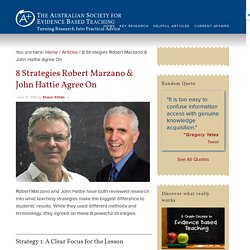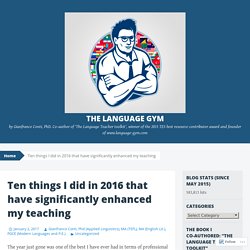

Create a Startup Culture in Your Classroom. Many educators that seek to incorporate design thinking and collaborative processes into teaching and learning are looking to the unique culture exemplified by startup companies. Both nimble and energized, today's startups are redefining how "work" looks by championing disruption in innovation and enterprise. Fueled by passion and charged with a desire to make a positive impact in our world, startups creatively incorporate voice and choice, flexibility, personality, and fun into learning and working environments. By embracing these business models for learning, teachers are taking on this entrepreneurial, DIY spirit and transforming the process of making meaning and searching for knowledge. 3 Ways Schools Condition Students – The Principal of Change. Several times a year, I will receive emails from parents about a post I wrote in 2010 titled, “The Impact of Awards”.

Often, they are reaching out because they are struggling to watch their own children have issues at school because of the culture of “school awards”. I encourage you to take a look at the original post, but here is one of the major themes: To this day, people still challenge me that this post is about being soft on kids, but to me, it is about understanding what we are focusing on. Meet the student support model that’s going national. It’s been incubating at St. Louis Park High School for 18 years. As the outgoing superintendent of St.

Louis Park Public Schools, Rob Metz, puts it, many schools are experiencing “initiative overload.” There are so many academic and behavior interventions and models and frameworks circulating through the education sector that it can be hard to decide what, exactly, is worth the effort. But Metz is confident that the student support program that’s helped close the achievement gap in his district can work in schools across the state. It’s already working in schools in other states. It’s working in rural districts. It’s called Building Assets, Reducing Risks (BARR). In brief, students are assigned to cohorts with a set group of teachers. On paper, it doesn’t sound all that innovative.
The BARR program is the recipient of three federal Investing in Innovation Fund grants, which are aimed at developing, validating and scaling up evidence-based practices that improve student achievement or growth. Relationships, data are key MinnPost photo by Erin Hinrichs. TEACH SDGs - Home. IDE Corp – Professional Development for Innovative Schools. Project Based Teaching Rubric #EdChat #PBLchat #PBL. New Infographic: The User's Manual To Design Thinking Your Teaching #designthinking #teaching. 21st Century Schoolswe help you create 21st centuryschools, classrooms and curriculum! - Home Page. New FreeBIE Resource: English Learner Scaffolds for PBL. According to a recent report by NPR, there are currently 5 million English Learners in K-12 classrooms in the United States.

About 1 out of every 10 students is in the process of acquiring the English language. The emphasis that Project Based Learning places on culture, collaboration, and authentic, contextualized learning makes it a powerful pedagogical approach for teaching English Learners. However, we at the Buck Institute for Education recognize that many EL students need additional scaffolds and supports within a PBL context. We are pleased to introduce the free downloadable resource English Learner Scaffolds for PBL, which is designed to help teachers plan thoughtful scaffolding for English Learners during each phase of a project. Here’s an overview of the thinking behind this resource: 8 Strategies Robert Marzano & John Hattie Agree On. Robert Marzano and John Hattie have both reviewed research into what teaching strategies make the biggest difference to students’ results.

While they used different methods and terminology, they agreed on these 8 powerful strategies. Strategy 1: A Clear Focus for the Lesson John Hattie highlights how important it is for you (and your students) to be clear about what you want them to learn in each lesson. According to Hattie, teacher clarity is one of the most potent influences on student achievement. Robert Marzano agrees, including lesson goals in his top 5 list of factors that affect how well students do at school.
Hattie states that lesson goals: Clearly state what you want your students to learnCan focus on surface or deep learning (or both)Must be challenging for the students relative to their current mastery of the topicMay be grouped (i.e. a single lesson may have more than one goal)Need to be shared with the students How do you add mixed fractions with different denominators? The Prism Model by Jeymmy Zambrano on Prezi. Ten things I did in 2016 that have significantly enhanced my teaching.
The year just gone was one of the best I have ever had in terms of professional development as a teacher, researcher, writer and CPD provider.

In this blog I share ten things that I have tried out in 2016 that, in my view, have significantly enhanced teaching and learning in my lessons. 1.Doubled the exposure to receptive processing and delayed production One major change to my teaching has involved massively increasing my students’ exposure to comprehensible input before engaging them in production. Thus, on introducing a new phoneme, grammar structure, communicative function and/or vocabulary set, I now ensure my students process the target items receptively through as wide as possible a range of listening and reading tasks which recycle them to death (narrow reading being one of my favourite reading/listening tasks).
Projects □ Project-Based Learning □□□ (by @friEdTechnology) #edchat #education #elearning #edtech #engchat #mathchat #pblchat.